Study MBBS in Indonesia for Indian Students: Top Medical Colleges, University Fees, Eligibility
MBBS in Indonesia is emerging as a promising destination for Indian students aspiring to study MBBS abroad at an affordable cost, with a focus on high-quality education, modern medical infrastructure, and increasing international recognition. With several Indonesia MBBS universities gaining global accreditation and offering English-medium programs, MBBS in Indonesia for Indian Students is becoming a compelling choice due to its cultural familiarity, proximity to India, and affordable lifestyle. The MBBS in Indonesia fees typically range from ₹20 to ₹35 lakhs for the full course, making it a cost-effective alternative to private medical colleges in India. Leading institutions like Universitas Indonesia, Gadjah Mada University, and Airlangga University are known for strong academic frameworks, clinical training, and research-driven medical education. Students also benefit from multicultural exposure, well-equipped hostels, Indian food options, and support services. This article covers all key aspects including eligibility for MBBS in Indonesia, admission process, curriculum structure, cost of living, and how University Insights supports Indian students with guidance for enrolling in top medical universities in Indonesia for the 2025–26 intake.
About Indonesia
Additionally, Indonesia provides scholarships and financial support, making it accessible for students. The strict rules and regulations in medical education ensure a disciplined learning atmosphere, making Indonesia a good option for Indian students seeking a well-rounded medical education. Each year, approximately 1,000 to 1,500 Indian students Enroll in MBBS programs in Indonesia, attracted by the opportunity and Favorable conditions.
| Category | Details |
|---|---|
| Capital | Jakarta |
| Official Language | Bahasa Indonesia |
| Number of Universities | 10+ Top medical universities |
| Average Tuition Fees for MBBS | USD 3,000 – USD 6,100 per year. |
| Cost of Living | Approx. USD 5,320 – USD 23,520 annually, including accommodation, food, transportation, and personal expenses. |
| Minimum and Maximum Temperature | 24°C to 32°C, with a tropical climate that remains warm and humid throughout the year. |
| Recognition | Recognized by NMC, WHO, ECFMG, FAIMER, and other international medical bodies. |
| Currency | Indonesian Rupiah (IDR) |
| Exchange Rate | 1 USD ≈ 15,000 IDR (approximate and subject to fluctuation). |
| Climate | Tropical climate, warm and humid throughout the year. |
Cultural Insights and Geographical Overview of MBBS in Indonesia
Indonesia, in Southeast Asia, is known for its rich cultural heritage and welcoming atmosphere. Indian students in Indonesia will find a homely environment due to cultural similarities and the friendly nature of the locals. The use of Bahasa Indonesia as the official language helps unify students and locals. Students may learn basic Bahasa Indonesia to ease their interactions and adapt to daily life. Geographically, Indonesia’s tropical climate and vibrant cities offer a unique setting for medical studies. Studying in Indonesia allows students to experience a blend of traditional customs and modern academic environments, making it an appealing choice for those seeking both adventure and education.
The Educational System to Study MBBS in Indonesia 2025
The educational system to study MBBS in Indonesia combines theoretical knowledge and clinical practice. Many universities in Indonesia offer MBBS programs with a focus on quality education and affordable tuition fees. The curriculum spans 5-6 years, including clinical rotations and an internship. Indonesia provide a supportive environment with scholarships to international students, making it accessible. The degrees are recognized worldwide, allowing graduates to become a doctor in Indonesia or practice elsewhere, making it a suitable choice for many students.
Want To Study in Indonesia?

Why Choose Indonesia for MBBS in 2025-26?
Quality of Education in Indonesian Medical Colleges
- Indonesia has become a notable destination for medical studies due to the quality of education offered by its institutions.
- Many universities in Indonesia offer well-structured MBBS programs with an emphasis on clinical training, research, and practical skills, making them among the best choices in the region.
- The medical colleges of Indonesia have updated curriculums that integrate modern medical techniques with traditional practices, providing a holistic education.
Global Recognition of Medical Degrees in Indonesia
- Degrees from medical colleges of Indonesia are recognized worldwide, allowing graduates to pursue MBBS and practice in countries like the US, UK, and India.
- Indian students in Indonesia benefit from degrees that are recognized by international bodies such as the World Health Organization (WHO) and the National Medical Commission (NMC), making it easier for them to return to India and become a doctor in Indonesia or elsewhere.
Safe and Student-Friendly Environment in Indonesia
- Students may find a homely environment in Indonesia, as the country is known for its hospitality and cultural inclusiveness.
- The rules and regulations in Indonesia are very strict, ensuring a safe and secure atmosphere for international students, particularly those coming from India.
- The welcoming nature of the Indonesian community helps students to pursue MBBS in a comfortable and supportive environment.
Affordable Fee Structure for MBBS in Indonesia
- A main advantage of choosing Indonesia for your MBBS is the low tuition fees compared to Western countries.
- The tuition fees in most universities range from USD 2,100 to USD 14,000 per year, making it affordable for international students.
- Indonesia provide various scholarships to international students, ensuring that even those with limited financial means can manage the costs.
Internationally Recognized MBBS Programs
- Indonesia for your MBBS study offers internationally recognized MBBS programs that adhere to global medical education standards.
- The medical studies in Indonesia are designed to equip students with the necessary skills and knowledge to succeed in the global medical field.
- Students in Indonesia are recognized for their competence and training, making MBBS studies in Indonesia a valuable investment in a medical career.
Cultural Diversity and Student Life in Indonesia
- Choosing Indonesia for your MBBS means embracing a rich cultural diversity that enhances the student experience.
- Students studying in Indonesia get to immerse themselves in a multicultural environment, learning not only medicine in Indonesia but also gaining exposure to various traditions and ways of life.
- The experience of Indian students in Indonesia is further enriched by the opportunity to learn Bahasa Indonesia, fostering better integration into the local community and improving communication skills in clinical settings.
Want To Study in Indonesia?
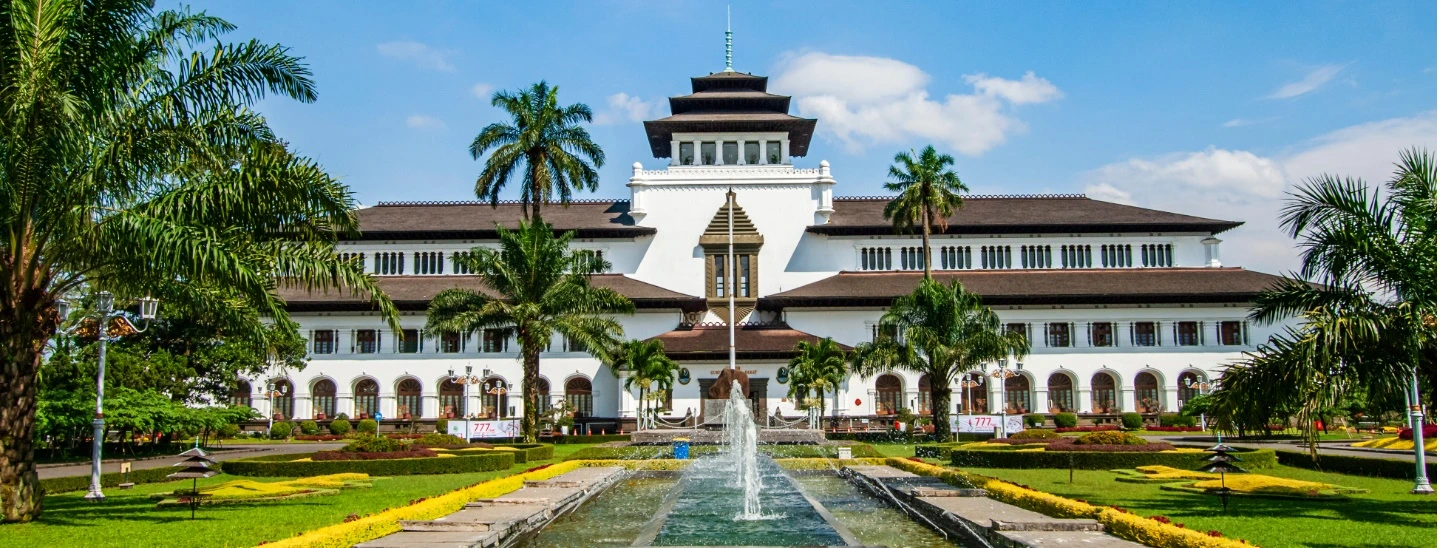
Quick Highlights About MBBS in Indonesia
| Category | Details |
|---|---|
| Capital | Jakarta |
| Official Language | Bahasa Indonesia |
| Number of Universities | 92 universities offering MBBS programs. |
| Average Tuition Fees for MBBS | USD 3,000 – USD 6,100 per year. |
| Cost of Living | USD 5,320 – USD 23,520 per year. |
| NEET Required | Yes |
| Eligibility | 12th grade with Physics, Chemistry, Biology; 50% for general, 40% for SC/ST/OBC. |
| Student Admission | 1,000 – 1,500 Indian students per year. |
| Recognition | NMC, WHO, ECFMG |
Want To Study in Indonesia?
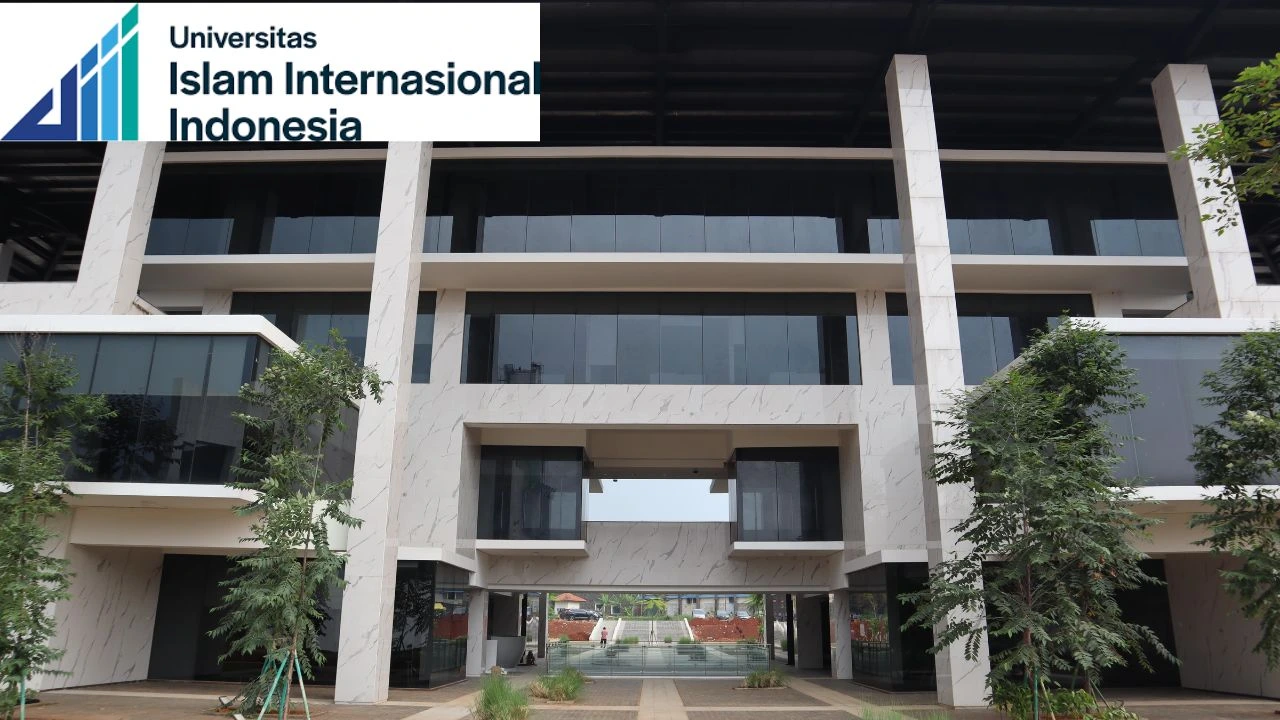
Study MBBS in Indonesia for Indian Students 2025-26
Indonesia has become an attractive destination for Indian students in Indonesia who wish to study MBBS due to its combination of affordable tuition fees and quality medical studies. Many universities in Indonesia offer English-medium programs, making it easier for Indian students to adapt. The main advantage of choosing Indonesia for medical education includes its low tuition fees and the globally recognized degrees that facilitate career opportunities both in India and abroad. Additionally, the cultural familiarity between Indonesia and India helps students to pursue MBBS in a more comfortable environment, and students will feel a homely atmosphere while studying here. With support such as scholarships to international students and an opportunity to become a doctor in Indonesia, it is a good option for Indian students.
Why Indonesia is the Best Choice for Indian Students to Study MBBS
- Low tuition fees make it an affordable option for Indian students.
- Globally recognized degrees open opportunities for practicing medicine in India and other countries.
- English-medium programs are available, making it easier for Indian students to adapt.
- Proximity to India ensures easier travel and communication with families.
- Cultural familiarity helps Indian students feel comfortable while adapting to a new country.
English-medium Instruction for Indian Students in Indonesia
- Many universities in Indonesia offer MBBS programs in English, reducing language barriers.
- Bahasa Indonesia is also taught to facilitate interactions with patients during clinical practice.
- English instruction ensures that students may focus more on their medical studies rather than struggling with a new language.
- It helps in understanding medicine in Indonesia effectively without language constraints.
Global Recognition of MBBS Degrees for Indian Students
- Degrees from medical colleges of Indonesia are recognized by NMC, WHO, and ECFMG.
- Students in Indonesia are recognized globally, making it easier to pursue further education or work in other countries.
- Indian students can return to India and practice after clearing the required licensing exams, such as FMGE/NExT.
- Recognition ensures that students can become a doctor in Indonesia or practice in international healthcare systems.
Advantages of Studying MBBS in Indonesia for Indian Students
- Low tuition fees and affordable living costs make Indonesia a budget-friendly option.
- Financial support for their students through various scholarships is available.
- The homely environment in Indonesia makes it easier for Indian students to adapt.
- Indonesia provide practical exposure and hands-on training in indonesia medical institutions.
- High standards of medical studies with modern facilities ensure a well-rounded education.
Proximity and Cultural Familiarity
- Indonesia and India share cultural similarities, making it easier for Indian students to adapt.
- Proximity to India means students can travel home more easily during holidays.
- Indonesian hospitality ensures students will feel a homely atmosphere while studying.
- Both countries share a strong focus on community values and traditions, easing the transition for Indian students.
Experience of Indian Students in Indonesian Medical Colleges
- Indian students appreciate the affordable tuition fees and quality of education.
- They benefit from the strict rules and regulations in Indonesia, ensuring discipline in MBBS studies.
- Many students highlight the main advantage of choosing Indonesia as the supportive environment in universities.
- Exposure to Bahasa Indonesia enhances communication skills during clinical rotations.
- Colleges offered for Indian students are well-equipped, providing comprehensive training.
Career Opportunities after MBBS in Indonesia for Indian Students
- Graduates can pursue MBBS and become licensed doctors in Indonesia or India.
- Medical colleges of Indonesia offer training that prepares students for international licensing exams.
- Indonesia are recognized worldwide, which helps graduates secure positions in hospitals across different countries.
- Opportunities for further studies in medicine, such as specialization, are available within Indonesia and abroad.
- Indonesian MBBS degrees open doors to work in both indonesia medical and global healthcare sectors.
Want To Study in Indonesia?
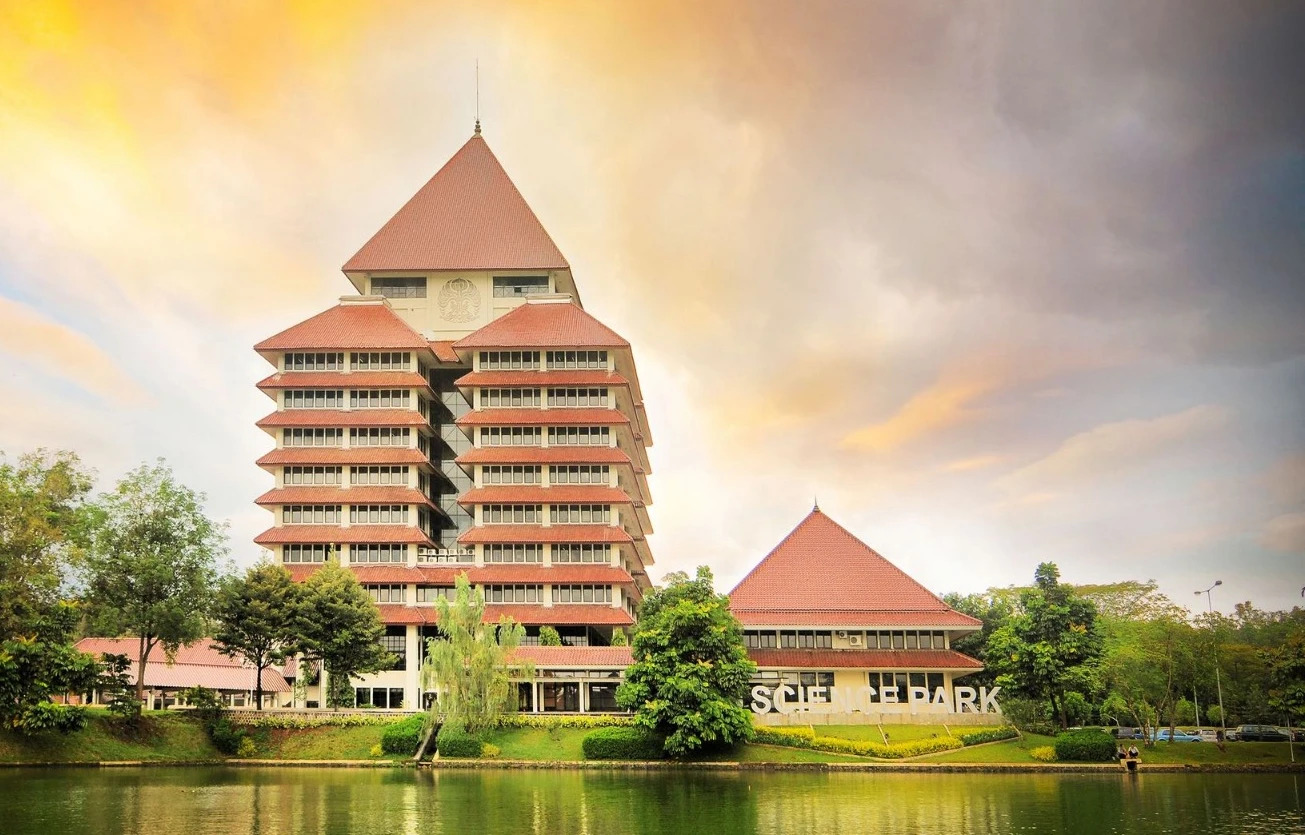
Studying MBBS Admission process in Indonesia 2025-26
Eligibility Criteria for MBBS in Indonesia for Indian Students
NEET Qualification:
Indian students must qualify for the National Eligibility cum Entrance Test (NEET) to be eligible for MBBS admission in Indonesia. For the 2025 academic year, the NEET qualifying marks are:
- 50th percentile (720-162) for general category students.
- 40th percentile (161-127) for SC/ST/OBC categories.
Academic Requirements:
Students should have completed their 12th grade with Physics, Chemistry, Biology, and English. The minimum marks required are:
- 50% for general category students.
- 45% for SC/ST/OBC students.
Required Documents for Studying MBBS in Indonesia 2025-26
- 10th and 12th Grade Transcripts: Official academic records.
- NEET Scorecard: Valid score required for application.
- Passport: Must be valid for at least 18 months.
- Passport-Sized Photographs: Usually 10-12 copies.
- Medical Certificate: Proof of physical fitness.
- Letter of Recommendation and Statement of Purpose: Required by some universities for evaluating applicants.
Application Process and Deadlines to Study MBBS in Indonesia 2025
- Step 1: Choose a university and submit an online application on their official website.
- Step 2: Upload academic transcripts, NEET scores, and other required documents.
- Step 3: Pay the application fee and wait for the admission letter.
- Step 4: Once accepted, apply for a student visa with the admission letter.
- Deadlines: Most universities accept applications from April to July, with admissions typically starting in August or September.
Visa Requirements and Process for Studying MBBS in Indonesia
- Student Visa (VITAS): Required for international students to study in Indonesia.
- Documents Needed: Admission letter, passport, proof of financial capacity, and medical clearance.
- Visa Application: Submit at the Indonesian embassy or consulate in the student’s home country.
- Processing Time: Generally takes 2-4 weeks for the visa to be issued.
- Visa Fee: Varies based on the student’s home country.
Want To Study in Indonesia?
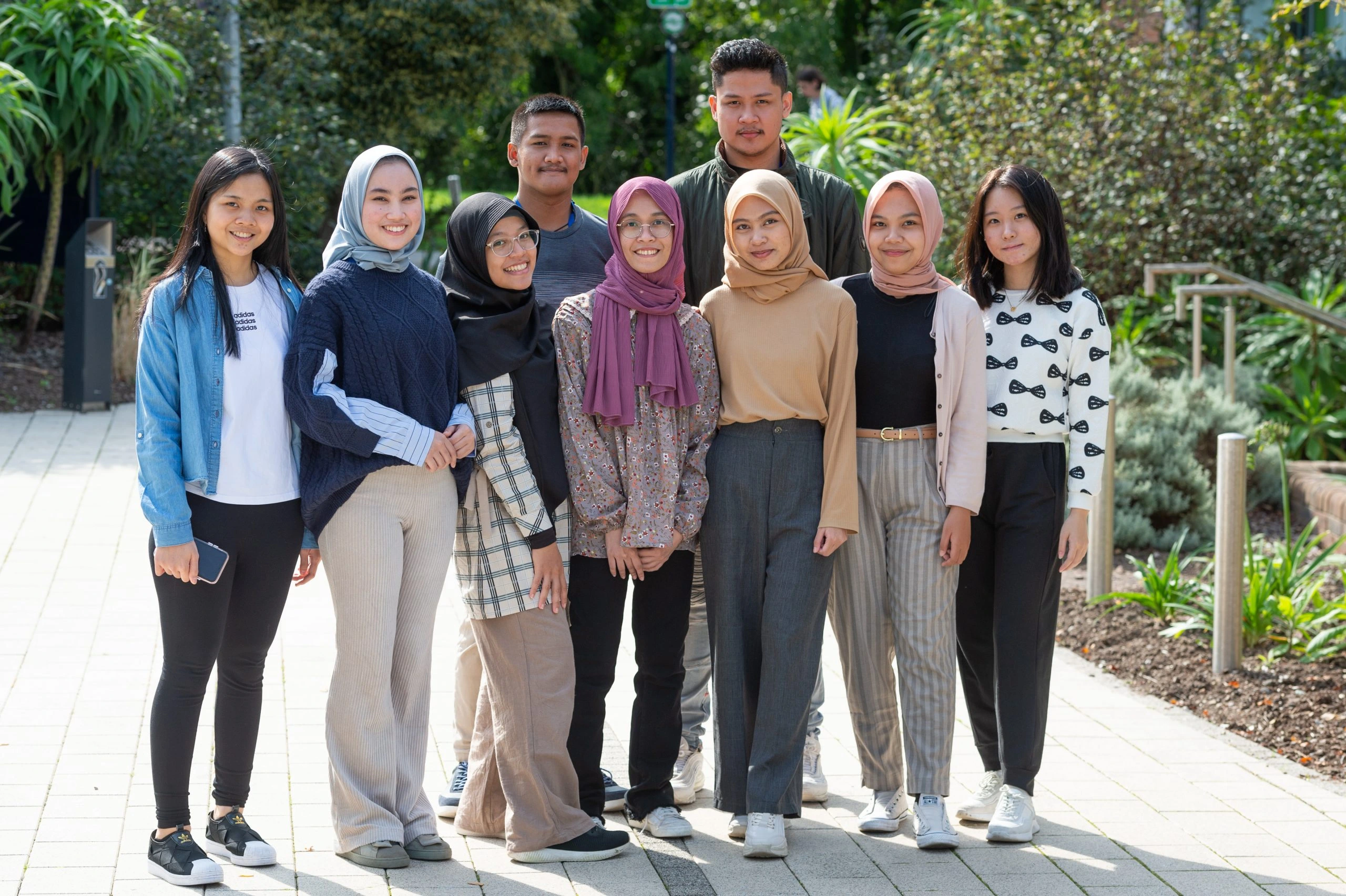
Fee Structure and Costs to Study MBBS in Indonesia 2025-26
MBBS Fees Structure in Indonesia 2025
| Year | Tuition Fee (USD) | Tuition Fee (INR) |
|---|---|---|
| 1st Year | 3,000 – 6,100 | 2,49,000 – 5,06,300 |
| 2nd Year | 3,000 – 6,100 | 2,49,000 – 5,06,300 |
| 3rd Year | 3,000 – 6,100 | 2,49,000 – 5,06,300 |
| 4th Year | 3,000 – 6,100 | 2,49,000 – 5,06,300 |
| 5th Year | 3,000 – 6,100 | 2,49,000 – 5,06,300 |
| 6th Year (Internship) | 2,000 – 4,000 | 1,66,000 – 3,32,000 |
Other Fees and Financial Costs Associated with Studying MBBS in Indonesia
| Category | Cost (USD/year) |
|---|---|
| Hostel Accommodation | 1,000 – 2,500 |
| Food and Living Expenses | 1,500 – 3,000 |
| Health Insurance | 300 – 500 |
| Books and Study Materials | 200 – 400 |
| Transport | 300 – 600 |
Detailed Breakdown of MBBS Fees in Indonesia
| Fee Type | Amount (USD) | Frequency |
|---|---|---|
| Admission Fee | 500 – 1,000 | One-time |
| Semester Tuition Fee | 2,000 – 3,050 | Every Semester (6 semesters) |
| Examination Fees | 200 – 400 | Per Semester |
| Student Activity Fee | 50 – 100 | Per Semester |
Hidden Costs of Studying MBBS in Indonesia
| Category | Approximate Cost (USD/year) |
|---|---|
| Additional Laboratory Fees | 100 – 300 |
| Visa Extension Fee | 100 – 150 annually |
| Language Courses (Bahasa Indonesia) | 200 – 400 |
| Emergency Health Care | 100 – 300 |
Financial Planning for MBBS in Indonesia
| Financial Aid Type | Details |
|---|---|
| Scholarships | Available through university programs like KNB Scholarship, UI SHINE, and others. |
| Student Loans | Offered by Indonesian banks to international students for covering tuition and living expenses. |
| Part-Time Work Opportunities | Up to 20 hours per week allowed, assisting with daily expenses. |
| Sponsorship Programs | Some universities offer sponsorships for meritorious students, reducing tuition costs. |
Want To Study in Indonesia?
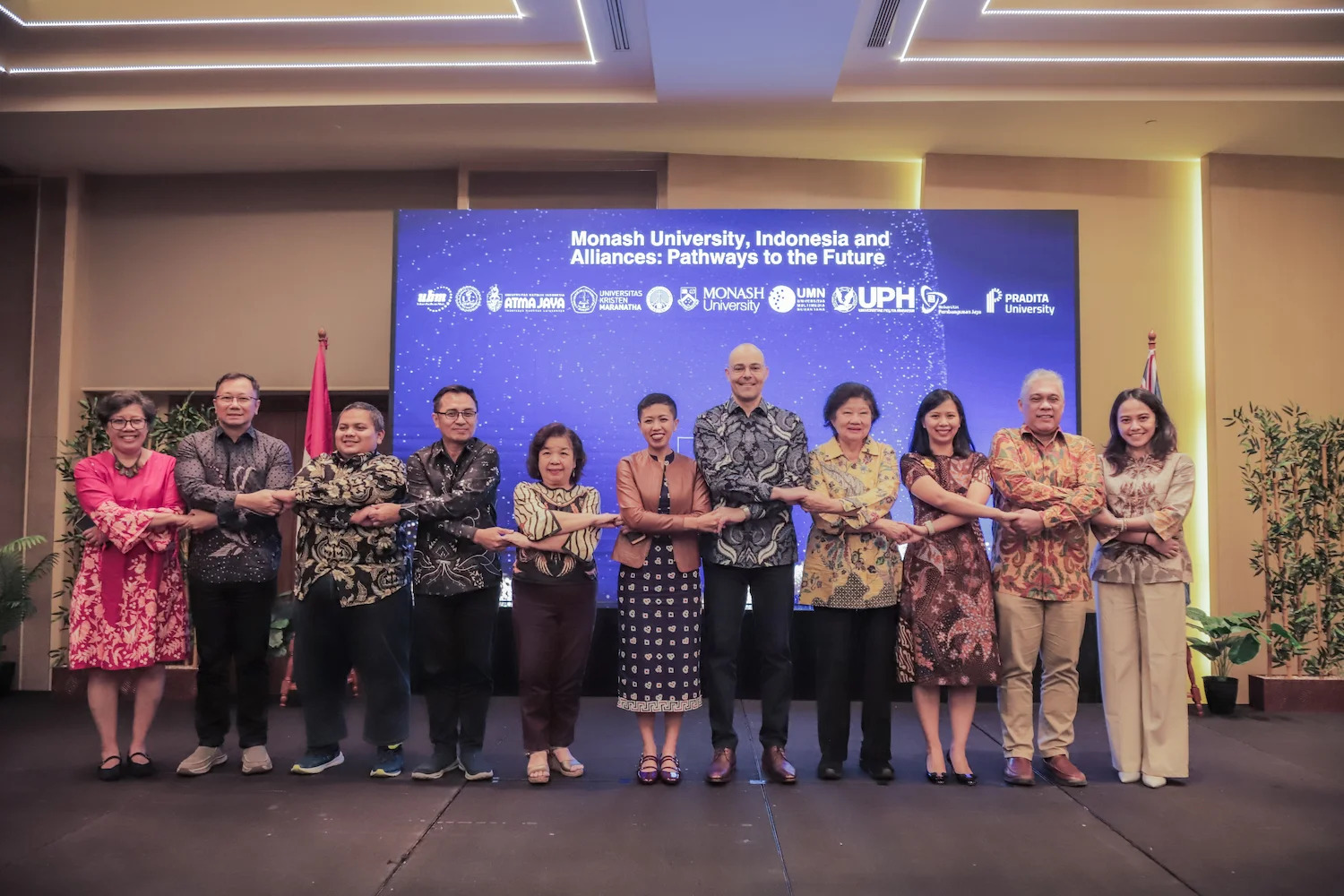
Top Ranked Medical Colleges in Indonesia for studying MBBS 2025-26
Top Medical College in Indonesia for MBBS
| Rank | University | Location | Founded | Notable Features | Annual Tuition Fee (USD) |
|---|---|---|---|---|---|
| 1 | University of Indonesia (UI) | Jakarta | 1950 | Oldest medical faculty in Indonesia; known for research and advanced clinical training. | 4,000 – 6,100 |
| 2 | Gadjah Mada University (UGM) | Yogyakarta | 1949 | Emphasizes problem-based learning and clinical exposure at affiliated hospitals. | 4,000 – 5,800 |
| 3 | Airlangga University (UNAIR) | Surabaya | 1954 | Second oldest, with a focus on integrated medical education and research. | 4,200 – 5,500 |
| 4 | Padjadjaran University (UNPAD) | Bandung | 1957 | Known for student-centered learning and strong community health focus. | 3,500 – 5,300 |
| 5 | Diponegoro University (UNDIP) | Semarang | 1960 | Modern facilities with diverse clinical rotations in various hospitals. | 3,600 – 5,500 |
| 6 | Hasanuddin University (UNHAS) | Makassar | 1956 | Offers international class and focuses on advanced medical technologies. | 3,200 – 5,000 |
| 7 | Brawijaya University (UB) | Malang | 1963 | Emphasizes research and innovative approaches in medical education. | 3,400 – 5,200 |
| 8 | Andalas University | Padang | 1955 | One of the oldest in Sumatra; known for community-oriented medical training. | 3,000 – 4,800 |
| 9 | Udayana University | Bali | 1962 | Attracts international students due to its research focus and strategic location. | 3,300 – 5,000 |
| 10 | Muhammadiyah University of Yogyakarta | Yogyakarta | 1981 | Focuses on integrating modern and traditional medical practices with strong ethical training. | 3,000 – 4,500 |
Want To Study in Indonesia?
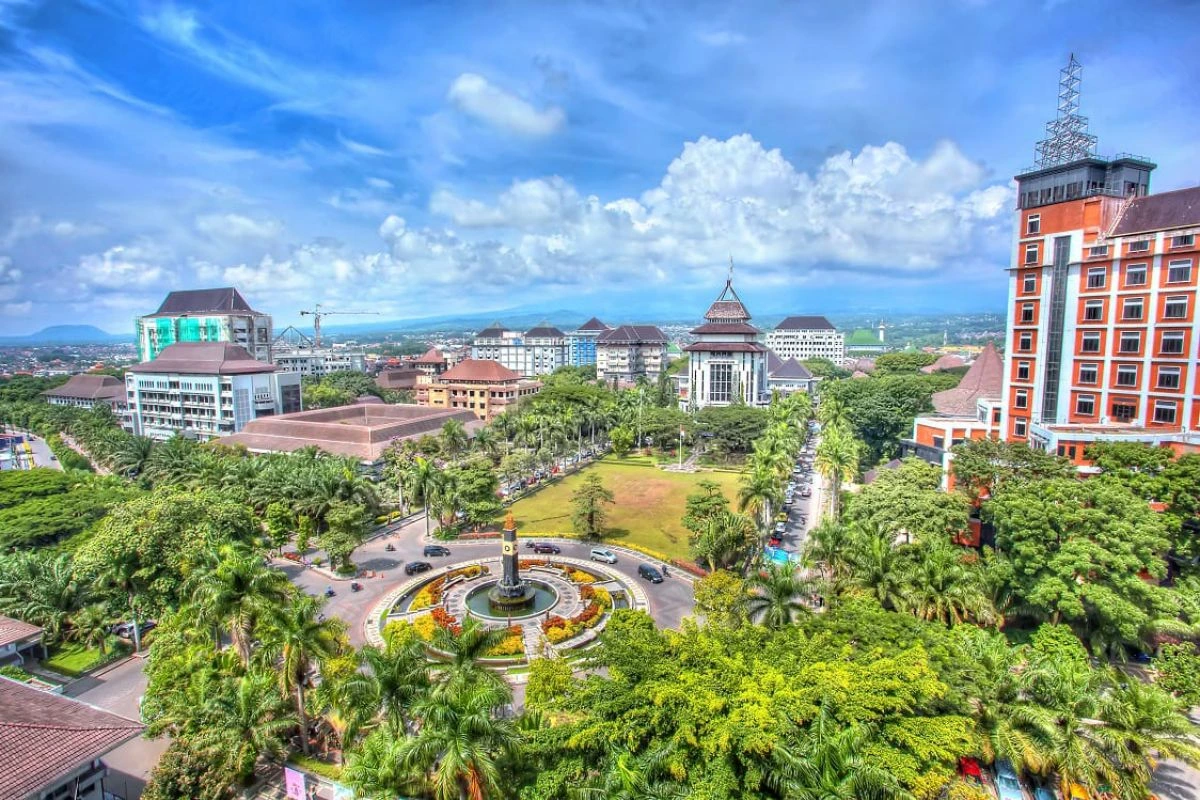
Advantages of Studying MBBS in Indonesia 2025-26
High-Quality Medical Curriculum and Training
- Indonesia has become a hub for medical studies due to its robust curriculum that blends theoretical knowledge with practical skills.
- Many universities in Indonesia offer hands-on training through clinical rotations at top hospitals, ensuring that students gain essential experience.
- The focus on medicine in Indonesia includes a strong emphasis on modern medical technologies and research-based learning.
Affordable Living Costs for Students
- A main advantage of choosing Indonesia is the relatively low tuition fees and affordable living costs compared to other countries.
- Tuition fees for MBBS programs are complemented by affordable housing, food, and transportation, making it financially viable for Indian students in Indonesia.
- The tuition fees in most universities range from USD 3,000 to USD 6,100 annually, while living expenses can vary between USD 5,320 and USD 23,520 per year.
Opportunities for Research and Clinical Exposure
- Indonesia provide excellent opportunities for students to pursue research and gain clinical exposure in diverse healthcare settings.
- Medical colleges of Indonesia are equipped with modern laboratories and research centers, fostering innovation in medical studies.
- Students studying in Indonesia often have access to a wide range of clinical internships, enhancing their practical knowledge and making them well-prepared for global medical challenges.
Post-Graduation Opportunities After MBBS in Indonesia
- Students in Indonesia are recognized globally, and their degrees are recognized worldwide by WHO, NMC, and ECFMG.
- Indian students in Indonesia can return to India after passing the required licensing exams, such as FMGE/NExT, or pursue further studies and specializations in other countries.
- Graduates can become a doctor in Indonesia or work in hospitals across different regions, given the global acceptance of Indonesian MBBS degrees.
Supportive Environment for International Students
- Students will feel a homely atmosphere in Indonesia due to the friendly local culture and cultural similarities between Indonesia and India.
- Colleges offered for Indian students often have student support services, including scholarships to international students and language assistance for those learning Bahasa Indonesia.
- Indonesia for your MBBS study is also appealing due to its safe and student-friendly environment, with rules and regulations in Indonesia ensuring discipline and safety within campuses.
Want To Study in Indonesia?
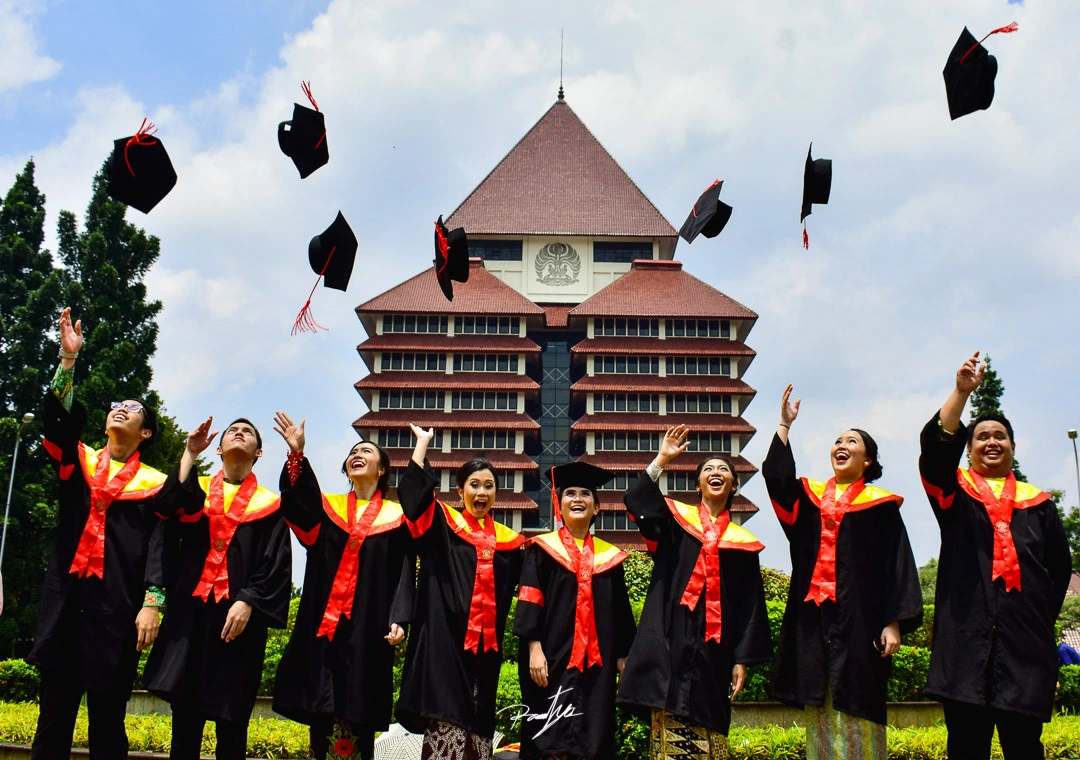
Course Details and Curriculum of Studying MBBS in Indonesia 2025-26
MBBS Curriculum and Structure in Indonesia
| Phase | Duration | Subjects Covered | Details |
|---|---|---|---|
| Pre-Clinical | 1.5 – 2 years | Anatomy, Physiology, Biochemistry, Pharmacology, Microbiology | Focuses on foundational medical sciences and basic clinical skills. |
| Para-Clinical | 1 year | Pathology, Forensic Medicine, Community Medicine | Integrates disease mechanisms with clinical practice. |
| Clinical | 2 – 2.5 years | Internal Medicine, Surgery, Pediatrics, Obstetrics & Gynecology, Psychiatry | Includes hospital rotations and direct patient care experiences. |
| Internship | 1 year | Rotations across various medical departments | Hands-on training under supervision in affiliated hospitals. |
Duration of MBBS Program in Indonesia
- Total Duration: 5 – 6 years (including 1 year of internship).
- The program is structured to provide a strong foundation in medical sciences during the initial years, followed by intensive clinical training and practical exposure in later stages.
Academic Support Services for MBBS Students in Indonesia
- Mentorship Programs: Personalized mentoring for academic and professional guidance.
- Language Support: English is the medium of instruction, with Bahasa Indonesia support for better communication with local patients.
- Library and E-Resources: Access to extensive medical literature, journals, and databases to aid research and learning.
Research and Laboratory Facilities for MBBS Students
- Modern Labs: Equipped with state-of-the-art facilities for biochemistry, anatomy, and clinical practice.
- Research Opportunities: Collaborations with universities and hospitals for clinical trials and public health research.
- Hands-on Training: Focus on laboratory skills through regular practical sessions.
Online Learning Resources and Platforms for MBBS Students
- University Portals: Provide access to lectures, course materials, and assignments.
- Virtual Labs: For remote learning of anatomy and other subjects.
- Webinars and Online Lectures: Conducted by medical experts to keep students updated with global medical trends.
Use of Technology in Medical Education in Indonesia
- Simulation Labs: Use of advanced mannequins and virtual reality tools for simulating medical procedures.
- Digital Anatomy Tables: For better understanding of human anatomy in a 3D perspective.
- Electronic Medical Records (EMR) Training: Prepares students for handling digital patient records, a crucial skill in modern healthcare settings.
Want To Study in Indonesia?

MBBS Syllabus in Indonesia 2025
Key Subjects and Curriculum for MBBS in Indonesia
| Semester | Subjects |
|---|---|
| 1st Semester | Anatomy, Physiology, Biochemistry |
| 2nd Semester | Anatomy, Physiology, Biochemistry |
| 3rd Semester | Pathology, Microbiology, Pharmacology |
| 4th Semester | Forensic Medicine, Community Medicine, Pathology |
| 5th Semester | ENT, Ophthalmology, Community Medicine |
| 6th Semester | General Medicine, Surgery, Obstetrics & Gynecology |
| 7th Semester | Pediatrics, Psychiatry, Dermatology |
| 8th Semester | Orthopedics, Radiology, Anesthesiology |
MBBS Course Structure in Indonesia
- Phases: The MBBS course is divided into Pre-Clinical (1st-2nd semester), Para-Clinical (3rd-5th semester), and Clinical phases (6th-8th semester).
- Teaching Methods: Emphasizes theoretical learning in the initial semesters followed by clinical practice through hands-on training in hospitals.
- Focus: Strong emphasis on practical knowledge with exposure to clinical settings and community health.
MBBS Internship Structure and Details in Indonesia
- Duration: 1 year of compulsory rotatory internship.
- Internship Rotations:
- Medicine: 1.5 months
- Surgery: 1.5 months
- Community/Rural Health: 3 months
- Pediatrics: 1 month
- Obstetrics & Gynecology: 1 month
- Anesthesiology: 15 days
- Ophthalmology & ENT: 15 days each
- Elective: 2 months in a chosen specialty.
Licensing Exams After MBBS in Indonesia
- Exam Requirements: Graduates need to pass the UKMPPD (Indonesian Medical Profession Program Competency Test) to practice as a doctor in Indonesia.
- International Students: Must also pass licensing exams like FMGE/NExT for practicing in India or other countries.
- Focus: Exams test clinical skills and medical knowledge gained during the program.
Ethical Practices in Medical Education in Indonesia
- Emphasis on Ethics: Indonesian medical programs stress patient confidentiality, professional conduct, and medical ethics in both coursework and clinical practice.
- Modules: Ethics are integrated into the curriculum, especially in subjects like Forensic Medicine and Community Health.
Environmental Sustainability in Medical Universities in Indonesia
- Green Campus Initiatives: Some universities focus on sustainable campus practices, including waste management and energy conservation.
- Environmental Health: Subjects in the curriculum include aspects of public health and environmental medicine, preparing students to address global health challenges.
Want To Study in Indonesia?

Opportunities and Career Prospects After Studying MBBS in Indonesia 2025-26
Career Opportunities After MBBS in Indonesia
- Graduates can become a doctor in Indonesia and work in hospitals, clinics, or research institutions.
- Medical studies in Indonesia are recognized globally, allowing students to practice in countries like India, the USA, and the UK after clearing relevant licensing exams.
- Many medical colleges of Indonesia have partnerships with hospitals, providing direct pathways to employment post-graduation.
- Opportunities include roles in clinical practice, medical research, and public health organizations.
Higher Studies Options After MBBS in Indonesia
- Students may opt for specializations such as surgery, pediatrics, radiology, and more within Indonesia or abroad.
- Indonesia provide pathways to MD/MS programs, as well as access to fellowship programs in advanced medical fields.
- Graduates can also pursue further medical studies in countries like the USA, UK, or Australia, taking advantage of global recognition of their degrees.
Licensing and Practice in Indonesia
- To pursue MBBS and practice as a doctor in Indonesia, graduates must pass the Indonesian Medical Licensing Examination (UKMPPD).
- Indian students in Indonesia wishing to practice in India need to pass the FMGE/NExT exam.
- Degrees from medical colleges of Indonesia are accepted by the WHO, NMC, and other global medical councils, facilitating easier licensure in various countries.
Part-Time Work Opportunities for MBBS Students in Indonesia
- Students studying in Indonesia can engage in part-time work opportunities within the campus or as research assistants.
- Universities often allow students to work up to 20 hours per week, helping to cover tuition fees during your course.
- Common jobs include teaching assistant roles, tutoring, or internships in medical research and community health projects.
Post-MBBS Job Placement Services
- Many universities in Indonesia offer job placement assistance for MBBS graduates, connecting them with hospitals, clinics, and research centers.
- These services often include career counseling, job fairs, and interview preparation workshops.
- Colleges offered for Indian students also have strong alumni networks that help new graduates find job opportunities.
Alumni Network for MBBS Graduates from Indonesia
- Medical colleges of Indonesia have strong alumni networks that provide mentorship and career guidance to new graduates.
- Alumni often assist in connecting graduates with job opportunities in Indonesia medical and international healthcare sectors.
- This network supports students to pursue roles in different specializations and regions.
Alumni Success Stories
- Many Indian students in Indonesia have gone on to establish successful medical careers in India and abroad.
- Alumni have found roles in leading hospitals, research institutions, and public health organizations.
- Success stories highlight the affordable tuition fees and quality education as key factors in their achievements.
Common Challenges Faced by International MBBS Students and How to Overcome Them
- Students may face challenges such as adapting to rules and regulations in Indonesia, language barriers with Bahasa Indonesia, and adjusting to a new culture.
- Universities provide language support, helping students learn Bahasa Indonesia for better interaction during clinical practice.
- Financial support for their students through scholarships and part-time work opportunities helps alleviate financial stress.
- Building a supportive community through student clubs and alumni networks helps students adjust and thrive in their new environment.
Want To Study in Indonesia?

Studying MBBS in Indonesia vs MBBS in India 2025-26
| Category | MBBS in Indonesia | MBBS in India |
|---|---|---|
| Post-Graduation Opportunities | Graduates can pursue specialization in Indonesia or abroad. Recognized degrees allow practice in multiple countries after passing required licensing exams like FMGE/NExT for India. | Limited post-graduate seats with high competition. Opportunities for MD/MS in India, but students often compete for fewer positions. |
| Recognition | Degrees from medical colleges of Indonesia are recognized by WHO, NMC, and ECFMG, facilitating practice in various countries, including India, after clearing relevant exams. | MBBS degrees from Indian colleges are directly recognized within India, ensuring a straightforward pathway to medical practice. |
| Cultural Adaptation | Offers a homely environment in Indonesia, with a culture that shares similarities with Indian traditions, making it easier for Indian students to adjust. | No cultural adaptation required as students remain within familiar surroundings. |
| Practical Exposure | Students gain clinical experience in diverse healthcare settings. Many universities offer modern facilities and access to international clinical training. | Offers a strong clinical foundation, but exposure may vary depending on the medical college’s infrastructure and resources. |
| Job Placement | Many universities in Indonesia offer job placement assistance, connecting graduates with hospitals and research institutions. | Indian colleges may have placement assistance, but the competition for jobs remains intense due to the large number of graduates. |
Want To Study in Indonesia?

Studying MBBS in Indonesia vs MBBS in Other Countries 2025-26
Why Choose Indonesia for MBBS Over Other Countries?
- Quality of Education: Many universities in Indonesia offer comprehensive medical studies, with up-to-date facilities and a focus on practical skills.
- Cultural Familiarity: Indian students in Indonesia benefit from a homely environment, as there are cultural and social similarities that help ease the transition. This makes choosing Indonesia for your MBBS study a smoother experience for Indian students.
- Global Recognition: Medical colleges of Indonesia are recognized by international medical bodies like WHO and NMC, ensuring that degrees from Indonesia are recognized worldwide.
- Supportive Environment: Indonesia provide scholarships and financial support for their students, making it a good option for Indian students looking to manage expenses while studying abroad.
Comparison of MBBS in Indonesia with Other MBBS Abroad Destinations
| Category | MBBS in Indonesia | MBBS in Russia | MBBS in Philippines | MBBS in Ukraine | MBBS in Bangladesh |
|---|---|---|---|---|---|
| Language of Instruction | English, Bahasa Indonesia | English, Russian | English | English, Ukrainian | English, Bengali |
| Clinical Exposure | Strong focus on practical training | Good exposure, varies by institution | High practical exposure | Clinical rotations available | Extensive clinical training |
| Cultural Adaptation | Similar culture to India | Adjustment needed for language and culture | Western influence, easier adaptation | Language and climate challenges | Familiar cultural environment |
| Post-Graduation Opportunities | FMGE/NExT required for India, global options | FMGE/NExT required for India, PG in Russia | Opportunities in Philippines, India | FMGE/NExT required for India, Europe PG | FMGE/NExT required for India, MD/MS |
| Recognition | WHO, NMC, ECFMG | WHO, NMC, ECFMG | WHO, NMC | WHO, NMC, ECFMG | WHO, NMC |
Want To Study in Indonesia?

Scholarships and Financial Aids to Study MBBS in Indonesia 2025-26
Scholarships for MBBS in Indonesia
- KNB Indonesian Government Scholarship: This scholarship is fully funded, covering tuition fees, living allowance, visa expenses, round-trip airfare, and health insurance. It also includes a settlement allowance to help international students adjust to life in Indonesia. Around 30 scholarships are allocated for undergraduate students each year.
- Darmasiswa Scholarship: Offered by the Indonesian government, this scholarship aims at promoting Indonesian culture, including language studies like Bahasa Indonesia, but it can be a stepping stone for students who plan to further their studies in medicine.
- University-Specific Scholarships: Some Indonesian medical colleges provide scholarships directly to international students, often based on merit or financial need. These scholarships help cover partial tuition fees or living expenses.
- Bilateral Scholarships: Some students may qualify for scholarships offered through agreements between Indonesia and their home countries. These typically support academic tuition and provide a stipend for living expenses.
- Private and External Scholarships: Various foundations and NGOs provide scholarships for international students studying medicine in Indonesia, such as those focusing on healthcare improvements or community service.
Financial Aids for MBBS Students in Indonesia
- Government Support Programs: In addition to scholarships, the Indonesian government occasionally offers financial aid packages that include reduced tuition fees or subsidized housing for international students.
- University Financial Aid: Many universities offer need-based financial aid packages to help international students manage costs during their studies. These aids may be in the form of tuition discounts, on-campus work opportunities, or grants.
- Student Loans: Some students opt for international student loans, which can be arranged through banks or financial institutions in their home country, allowing them to manage the costs of studying medicine in Indonesia.
How to Apply for Scholarships and Financial Aids for MBBS in Indonesia
- Step 1: Research Eligibility: Begin by reviewing the eligibility criteria for each scholarship program, including age limits, academic qualifications, and language proficiency.
- Step 2: Prepare Documents: Gather necessary documents like academic transcripts, letters of recommendation, statement of purpose, English proficiency test scores (if required), and a valid passport.
- Step 3: Application Submission: Fill out the scholarship application forms accurately and submit them before the deadlines. Most applications are online, requiring you to upload the required documents.
- Step 4: Follow Up: Keep track of your application status and be ready to respond to any additional information requests or attend interviews if required.
Want To Study in Indonesia?

MBBS Options for Indian Students Other Than Studying MBBS in Indonesia 2025
For Indian students exploring alternatives to studying MBBS in Indonesia, several international options offer competitive education, practical exposure, and varied cultural experiences. Here is a detailed overview:
Popular Alternatives for Indian Students to Study MBBS Abroad
- Russia: Known for its rich medical education heritage, Russia offers MBBS courses with a strong emphasis on research and practical training. The programs are conducted in English and Russian, with affordable tuition fees compared to many Western countries.
- Philippines: A popular choice due to its English-medium education system and cultural similarities with India. The curriculum follows the American education system, making it a good choice for those aiming for USMLE.
- Ukraine: Offers a European standard of medical education with extensive clinical exposure and affordable fees. Ukraine’s universities are recognized globally, including by WHO and NMC.
- Bangladesh: Provides a curriculum similar to Indian medical studies. It is an attractive option due to its proximity to India and lower costs, making it easier for Indian students to adapt.
Feasible Options for MBBS Outside Indonesia
- China: Known for its advanced infrastructure and a large number of recognized universities offering MBBS degrees in English. It’s an ideal choice for those seeking modern facilities and a diverse learning environment.
- Kazakhstan: Offers a shorter duration MBBS course of 5 years with a relatively lower cost of education. It has become increasingly popular among Indian students due to the affordability and quality of education.
- Nepal: Proximity and cultural similarities make Nepal an appealing choice. The course duration and curriculum are similar to Indian medical studies, and many universities are NMC-approved.
- Georgia: Known for a safe and friendly environment, Georgia offers a quality medical education with a focus on practical learning and international exposure.
Pros and Cons of Each Destination Compared to Indonesia
| Country | Pros | Cons |
|---|---|---|
| Russia | – Strong clinical exposure, WHO/NMC recognition | – Language barrier with Russian needed for patient interaction |
| – Affordable education and living costs | – Harsh winters may be challenging for Indian students | |
| Philippines | – English medium instruction, follows US curriculum | – Higher cost of living compared to some Asian countries |
| – High FMGE pass rate among returning Indian students | – Natural disasters like typhoons may pose challenges | |
| Ukraine | – European standard of education, globally recognized | – Ongoing geopolitical instability can pose safety concerns |
| – Practical exposure with access to modern hospitals | – Cold climate and language adaptation required | |
| Bangladesh | – Cultural and language similarities with India | – Limited seats for international students |
| – Shorter travel time and affordable fees | – Infrastructure may vary across universities | |
| China | – Advanced facilities, globally recognized degrees | – Cultural differences and language learning required |
| – Lower living and tuition costs | – Government regulations on student activities can be restrictive | |
| Kazakhstan | – Shorter course duration (5 years), lower costs | – Language adaptation needed for clinical practice |
| – NMC recognized universities | – Fewer opportunities for global internships | |
| Nepal | – Similar curriculum to India, easier adaptation | – Limited infrastructure in some universities |
| – Proximity allows frequent visits home | – Fewer research opportunities |
Want To Study in Indonesia?

Living Cost While You Study MBBS in Indonesia 2025-26
Living costs in Indonesia can be relatively affordable for international students, especially compared to other study destinations. Here’s a detailed overview of different aspects of living and studying in Indonesia for MBBS students:
Student Lifestyle, Culture, and Living Costs in Indonesia
- Monthly Living Costs: The average living cost for an MBBS student in Indonesia is around USD 300 – 600 per month, covering accommodation, food, transportation, and other daily expenses. The cost may vary depending on lifestyle choices and the city where students reside.
- Cultural Life: Students may experience a blend of modernity and traditional Indonesian culture, with opportunities to explore local festivals, food, and communities. Indonesia has become a welcoming place for international students due to its rich cultural diversity.
- Affordable Living: Compared to other study destinations, Indonesia is very less expensive, making it an attractive option for Indian students who wish to pursue MBBS in a cost-effective manner.
Safety and Accommodation for International Students in Indonesia 2025
- Accommodation Options: Students can choose from on-campus hostels and private apartments. Tuition fees at private universities may sometimes include accommodation options, or they can be availed separately for USD 100 – 250 per month.
- Safety Measures: Indonesian cities, particularly those with large student populations, are generally safe. Universities often provide support services to help students adjust and stay safe during their studies.
Comparative Living Costs for MBBS Students in Different Countries
| Country | Average Monthly Living Cost (USD) | Accommodation (USD) | Food & Groceries (USD) | Transportation (USD) | Other Expenses (USD) |
|---|---|---|---|---|---|
| Indonesia | 300 – 600 | 100 – 250 | 100 – 200 | 20 – 50 | 80 – 100 |
| Russia | 400 – 800 | 150 – 300 | 120 – 250 | 20 – 60 | 100 – 150 |
| Philippines | 400 – 700 | 150 – 350 | 100 – 200 | 30 – 70 | 100 – 150 |
| Bangladesh | 300 – 500 | 80 – 200 | 100 – 150 | 15 – 40 | 80 – 110 |
| Kazakhstan | 300 – 600 | 100 – 250 | 100 – 180 | 20 – 50 | 80 – 120 |
Language and Communication Support for International Students in Indonesia
- Language of Instruction: While many universities in Indonesia offer MBBS programs in English, learning Bahasa Indonesia can be beneficial for daily communication and interaction with patients during clinical training.
- Language Support: Universities provide language classes to help international students become proficient in Bahasa Indonesia, making it easier to adapt to local environments.
Support Services for MBBS Students in Indonesia
- University Support Centers: Indonesian universities provide international student offices to assist with visa procedures, accommodation, and cultural adaptation.
- Financial Support: Scholarships and financial support for their students are available to help reduce living expenses, particularly in private universities.
Extracurricular Activities and Student Clubs in Indonesia
- Student Organizations: Universities encourage students to participate in student clubs focusing on various interests such as sports, arts, and cultural activities.
- Community Engagement: Many universities promote community service activities, allowing students to engage with local communities and understand the homely environment in Indonesia.
Cultural Adaptation and Support Services in Indonesia
- Orientation Programs: Universities conduct orientation sessions to help international students adapt to the local culture and rules and regulations in Indonesia, which can be quite strict but supportive of student safety.
- Homely Environment: With a large number of Indian students in Indonesia, newcomers often find a familiar environment that makes their stay comfortable.
Want To Study in Indonesia?

Health and Safety While Studying MBBS in Indonesia
When studying medicine in Indonesia, international students must prioritize their health and safety to ensure a smooth and successful academic journey. Here are key aspects to consider:
Healthcare Facilities for International Students in Indonesia
- University Clinics: Many universities offer on-campus health clinics that provide basic medical care, making it easy for students to access healthcare services.
- Public and Private Hospitals: Indonesia has both public and private hospitals, with private hospitals generally offering faster services and English-speaking staff, which can be beneficial for Indian students in Indonesia.
- Specialized Services: Larger cities like Jakarta, Yogyakarta, and Bali have hospitals with specialized departments and international standards, ensuring students receive quality care when needed.
Health Insurance Requirements for International Students
- Mandatory Health Insurance: It is compulsory for international students to have health insurance during their MBBS studies. This can be arranged through the university or private insurers.
- Coverage: Insurance generally covers basic medical services, emergency care, and hospitalization, providing financial protection for students in case of illness or accidents during their time in Indonesia.
Vaccination and Medical Check-up Requirements
- Required Vaccinations: Students must be vaccinated against common diseases such as Hepatitis B, Tuberculosis (TB), and Tetanus before entering Indonesia. Proof of vaccination is usually required as part of the visa process.
- Pre-Arrival Medical Check-Up: A medical examination is required before obtaining a student visa. This ensures that students do not carry communicable diseases and are fit to study and live in the country.
Safety Tips and Resources for International Students in Indonesia
- Emergency Contacts: Students should always have contact information for local authorities, embassy, and university support services. Indonesia has an emergency number (112) that can be used for police, fire, and medical emergencies.
- Personal Safety: It is recommended to stay in well-lit areas at night, use registered taxis or ride-sharing services, and avoid carrying large amounts of cash. Students should also follow local laws, as rules and regulations in Indonesia can be strict regarding public behavior.
- Cultural Awareness: Understanding local customs and traditions can help students studying in Indonesia adapt better and avoid misunderstandings.
Mental Health and Counseling Services in Indonesia
- University Counseling Centers: Many universities provide free or low-cost counseling services for international students to help with stress, anxiety, or homesickness.
- External Resources: Private counseling centers are also available in major cities, offering services in both English and Bahasa Indonesia. These services ensure students maintain good mental health during their studies.
Pre-Departure Checklist for Studying MBBS in Indonesia
- Documents: Ensure all required documents like passports, visas, academic certificates, and health records are in order.
- Vaccinations: Complete all required vaccinations and obtain a health certificate from a certified doctor.
- Financial Planning: Arrange for tuition fees, tuition fees at private universities, and living expenses. It’s also essential to understand rules and regulations in Indonesia related to banking and currency exchange.
- Cultural Research: Familiarize yourself with Indonesian culture, traditions, and basic phrases in Bahasa Indonesia to ease daily interactions.
Orientation Programs for International Students
- University-Led Programs: Most medical colleges of Indonesia offer orientation programs that help students adjust to their new environment. These programs cover topics like local culture, academic expectations, and safety measures.
- Social Integration Activities: Orientation sessions also include meet-and-greet events, city tours, and introductions to student clubs, making it easier for students to pursue a balanced life in Indonesia.
- Academic Workshops: These are designed to help students understand the medical studies curriculum, grading systems, and research opportunities available in their respective universities.
Want To Study in Indonesia?

Financial Planning to Study MBBS in Indonesia
Careful financial planning is essential for Indian students who wish to pursue medical studies in Indonesia. This involves budgeting for tuition fees, managing living expenses, and exploring part-time work opportunities to support education costs. Here’s a detailed look into these aspects:
Budgeting Tips for MBBS Students in Indonesia
- Create a Detailed Budget: Allocate funds for tuition fees, accommodation, food, and other expenses like transportation and leisure. Planning for these in advance helps avoid financial strain during the study period.
- Track Daily Expenses: Use mobile apps or spreadsheets to keep track of daily expenses. This helps identify areas where students may overspend and adjust their budget accordingly.
- Prepare for Increases: Keep in mind that tuition fees during your course might increase slightly each year due to inflation or administrative changes in universities offer.
- Set Aside Emergency Funds: Save a small percentage of your budget each month for unexpected expenses such as medical emergencies or unplanned travel.
Managing Living Expenses as a Medical Student
- Opt for University Accommodation: Staying in on-campus housing can be more economical than renting apartments, and it also allows students to integrate better into the academic community.
- Affordable Meal Plans: Utilize university cafeterias or local eateries that offer budget-friendly meal options, which can be significantly cheaper than cooking or dining out regularly.
- Transportation: Use public transport, which is widely available and economical in Indonesian cities. Many universities offer student passes for buses and trains, helping reduce daily travel costs.
- Shared Living: Consider shared apartments or dormitories, which reduce rental costs and make it easier to manage expenses while enjoying a homely environment in Indonesia.
- Medical Insurance: Securing health insurance early can help avoid high medical costs in case of illness, allowing students to focus on their MBBS studies without financial worry.
Part-Time Job Opportunities to Support Financial Needs
- On-Campus Jobs: Some medical colleges offered for Indian students have part-time positions available on campus, such as library assistants or teaching assistants. These roles help students earn extra money while managing their study schedule.
- Tutoring and Language Exchange: International students can offer tutoring in English or other subjects to local students, or participate in Bahasa Indonesia language exchange programs for a stipend.
- Freelancing: Opportunities such as writing, graphic design, or digital marketing can be done remotely, providing flexibility and a source of income without impacting study time.
- Internships: Although paid internships in the medical field are less common, some universities may allow students to assist in research projects, which can offer stipends and valuable experience.
By carefully planning their finances, Indian students in Indonesia can ensure that mbbs study is the low burden they expected. Indonesia’s affordable living costs, combined with opportunities for part-time work and financial support, make it a good option for Indian students seeking a quality education abroad.
Want To Study in Indonesia?

Frequently Asked Questions for Studying MBBS in Indonesia 2025-26
What is the MBBS in Indonesia fees structure for Indian students?
- The tuition fees in most universities for Indian students pursuing MBBS in Indonesia range from USD 3,000 to 6,000 per year, depending on the institution. While Indonesia may offer affordable options, students should be prepared for potential increases in tuition fees during their course due to changes in university policies or inflation.
What is the eligibility criteria for MBBS in Indonesia for Indian students?
- To study MBBS in Indonesia, Indian students need to have completed their 12th grade with Physics, Chemistry, and Biology. Indonesia may require students to qualify in NEET as a prerequisite for admission. Additionally, certain universities offer direct admission without entrance exams, but students must verify individual university requirements.
Are there scholarships for MBBS students in Indonesia?
- Yes, Indonesia may provide various scholarship options for international students, including those specifically designed for Indian students. Scholarships can help reduce the financial burden by covering tuition fees or offering living stipends. Students should apply early, as availability is often limited.
How to apply for MBBS in the best medical college in Indonesia?
- To apply for MBBS in the best medical college in Indonesia, students must submit academic transcripts, NEET scores (if required), and proof of English proficiency through an online application. Each college has specific criteria, which may include interviews and document verification. It’s essential to check the admission details on the respective university’s website.
How long is the duration of the MBBS program in Indonesia?
- The MBBS program in Indonesia typically lasts 5-6 years, including 1 year of mandatory internship. Indonesia may provide an intensive curriculum that blends theoretical knowledge with practical training. Students should factor in possible tuition fees increases when planning for the entire duration of their study.
What is the cost of studying MBBS in Indonesia at the best medical colleges?
- The cost of studying MBBS in Indonesia at the best medical colleges ranges between USD 15,000 to 30,000 for the entire course, depending on the universities offering the program. This estimate includes tuition fees, accommodation, and other living expenses, making medicine in Indonesia a cost-effective option for international students.
Which universities offer the best programs for studying medicine in Indonesia?
- Several universities offer high-quality medicine in Indonesia programs, such as Universitas Indonesia, Gadjah Mada University, and Airlangga University. These are considered some of the best medical colleges in Indonesia, known for their comprehensive curriculum and excellent clinical training facilities, providing a solid foundation for aspiring medical professionals.
Is the MBBS degree from Indonesia recognized in India?
- Yes, the MBBS degree from Indonesia is recognized by the National Medical Commission (NMC) of India, provided the degree is from a university recognized by the NMC. Graduates are required to pass the FMGE/NExT exam in India to practice medicine. Indonesia may offer quality education, but students should verify the recognition status before applying to ensure a smooth transition for their medical careers in India.
Quick Info
- Number of Universities
- Approximately 87 universities offer MBBS programs.
- Recognition
- WHO, NMC, FAIMER, WFME, and the Indonesian Ministry of Education
- Eligibility
- 50% in Physics, Chemistry, Biology (PCB) in 12th grade; NEET required for Indian students; Age between 17-25 years
- Course Duration
- 5.5 years of classroom study
- Total Average Tuition Fees
- $3,000 - $6,100 per year (approximately ₹2.5 - ₹5 lakh annually)
- NEET
- Mandatory for Indian students
- Intake
- September and January
- Medium of Teaching
- English, with local interactions in Bahasa Indonesia
Admission Queries
Read the Experiences of Students after taking University Insight's Services
These stories are rooted in real-life experiences of students who trusted University Insights to help them pursue their academic dreams and study abroad. By using our services, these students have been able to achieve their educational goals and create opportunities for their future. Whether it’s navigating the complexities of international admissions or finding the right program, University Insights has guided them every step of the way. Now, it’s your turn. Take that first step toward fulfilling your academic aspirations and exploring new horizons abroad. Embark on your own incredible journey today with University Insights!
Aarav Patel
Indonesia
Priya Sharma
Indonesia
Karan Singh
Indonesia
Simran Kaur
Indonesia
Rahul Verma
Indonesia
Ananya Mehta
Indonesia
Ravi Gupta
Indonesia
Meera Joshi
Indonesia
Neha Rajan
Indonesia
Sandeep Kumar
Indonesia


